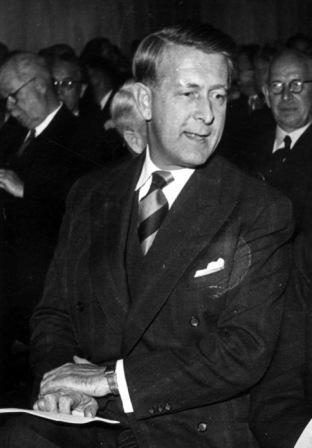Bertil Ohlin (Bertil Gotthard Ohlin)

Having received his B.A. from Lund University 1917 and his MSc. from Stockholm School of Economics in 1919. He obtained an M.A. from Harvard University in 1923 and his doctorate from Stockholm University in 1924. In 1925 he became a professor at the University of Copenhagen. In 1929 he debated with John Maynard Keynes, contradicting the latter’s view on the consequences of the heavy war reparations payments imposed on Germany. (Keynes predicted a war caused by the burden of debt, Ohlin thought that Germany could afford the reparations.) The debate was important in the modern theory of unilateral international payments. In 1930 Bertil Ohlin succeeded Eli Heckscher, his teacher, as a professor of economics, at the Stockholm School of Economics. In 1933 Ohlin published a work that made him world-renowned, Interregional and International Trade. In this Ohlin built an economic theory of international trade from earlier work by Heckscher and his own doctoral thesis. It is now known as the Heckscher–Ohlin model, one of the standard model economists use to debate trade theory.
The model was a break-through because it showed how comparative advantage might relate to general features of a country’s capital and labour, and how these features might change through time. The model provided a basis for later work on the effects of protection on real wages, and has been fruitful in producing predictions and analysis; Ohlin himself used the model to derive the Heckscher–Ohlin theorem, that nations would specialize in industries most able to utilize their mix of national resources efficiently. Today, the theory has been largely disproved, yet it is still a useful framework by which to understand international trade. Later, Bertil Ohlin and other members of the “Stockholm school” extended Knut Wicksell’s economic analysis to produce a theory of the macroeconomy anticipating Keynesianism. Bertil Ohlin was party leader of the liberal Liberal People’s Party from 1944 to 1967, the main opposition party to the Social Democrat Governments of the era, and from ’44 to ’45 was minister of commerce in the wartime government. His daughter Anne Wibble, representing the same party, served as Minister of Finance from 1991 to 1994. In 2009, a street adjacent to the Stockholm School of Economics was named after Ohlin: “Bertil Ohlins Gata”.
Born
- April, 23, 1899
- Klippan, Scania, Sweden
Died
- August, 03, 1979
- Åre Municipality, Sweden
Cemetery
- Norra begravningsplatsen
- Solna Municipality, Sweden



